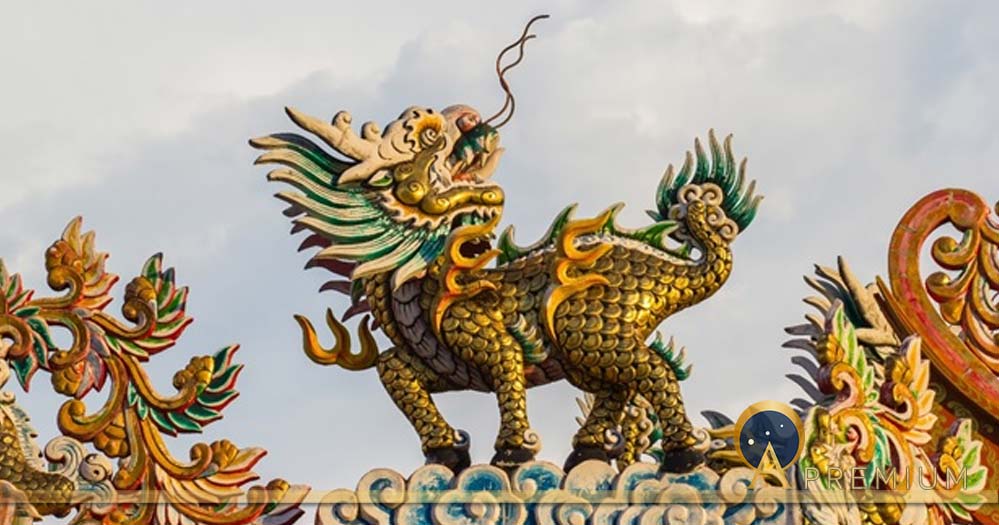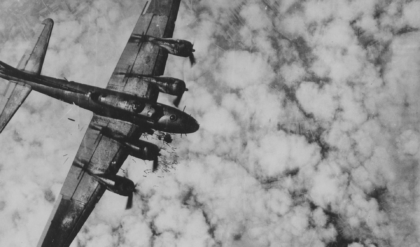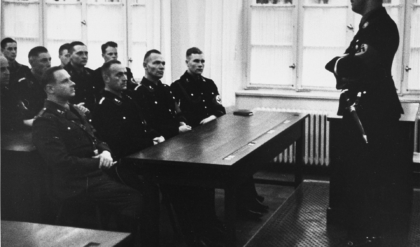

Considering that fanciful animals, which the Chinese collectively dub pixiu ( pi hsieh), typically stem from a real creature, the question must be asked: Were there once horses with horns? Although unicorns feature in worldwide cultures, there is no evidence to support their existence. However, there are deer, which have horns, and sometimes the Chinese portrayal of unicorns, which they call qilin (ch’i-lin) display a deer’s attributes, while others have attributes of multiple animals juxtaposed onto them.
(Read Part 1 here: Chinese Fantastic Beasts the Taotie Demon Who Eats Humans)

Ceramic figures decorating the Hall of Supreme Harmony at the Imperial Palace Museum. The 10 mystical beasts indicate the highest status in the empire for this building (CC BY-SA 1.0)
The previous article Chinese Fantastic Beasts: The Taotie Demon Who Eats Humans, focuses on the creature’s diabolical origin, but the origin of the qilin is not that simple, as the earliest Chinese qilin depictions did not have characteristics of gentle deer. They are most likely chimerical, having attributes of multiple animals juxtaposed onto the same creature, and it is possible that their depictions originated from discovered skeletons. The Chinese were familiar with the triceratops, a dinosaur that appeared during the Maastrichtian stage of the Cretaceous Period. It had three horns on its neck frill, and was therefore called triceratops, which meant ‘three-horned-face’ in Greek, and although the animal became extinct about 66 million years ago, their skeletons were unearthed and artists depicted the animal that they imagined upon seeing its bones. Clay figures date from the Six Dynasties Period (420-617 AD) and they always have irregular horn alignment. This is due to the fact that triceratops’ skulls, when found, were typically crushed flat.

Triceratops horridus skull in the Gallery of Paleontology (French National Museum of Natural History) (CC BY-SA 2.0)
Interestingly, figurines based on triceratops’ skeletons have hooves, indicating that the Chinese perceived the animal as deer-like, hence unicorn-like. Looking at figures from the Japanese Edo Period (1603-1867), the qilin’s combined characteristics (of other creatures) are clearly visible. They have horns, but one is more serpentine or dragon-like, while another is more deer-like.

Large bronze incense burner with qilin shape. This type originated during the Ming Dynasty, when dragon and lion attributes were added to deer-like qilin depictions. Japanese, Edo Period (1603-1867). (From the collection of Walther G. von Krenner)
READ MORE…
Like this Preview and want to read on? You can! JOIN US THERE ( with easy, instant access ) and see what you’re missing!! All Premium articles are available in full, with immediate access.
For the price of a cup of coffee, you get this and all the other great benefits at Ancient Origins Premium. And – each time you support AO Premium, you support independent thought and writing.
DR. KEN JEREMIAH has written several books about religions, mummification, and spirituality, including Living Buddhas, Christian Mummification, and Eternal Remains. For more information about the taotie controversy, please refer to his book, written with Walther G. von Krenner Creatures Real and Imaginary in Chinese and Japanese Art.




